Throughout history, dreams have played a fascinating and enigmatic role in inspiring artists to create their masterpieces. These nocturnal visions have served as a gateway to the subconscious mind, unlocking a world of creativity, symbolism, and hidden meanings. From ancient civilizations to the Renaissance, Romanticism, and the surrealist movement, artists have looked to their dreams for inspiration, allowing their imaginations to be ignited by the surreal landscapes and profound symbols that inhabit the dream realm. In this article, we will explore the captivating link between dreams and artistic creation, delving into the ways in which dreams have influenced some of the greatest artists in history. Join us on this journey as we uncover the profound role that dreams have played in inspiring artists throughout the ages.
Dreams and Creativity
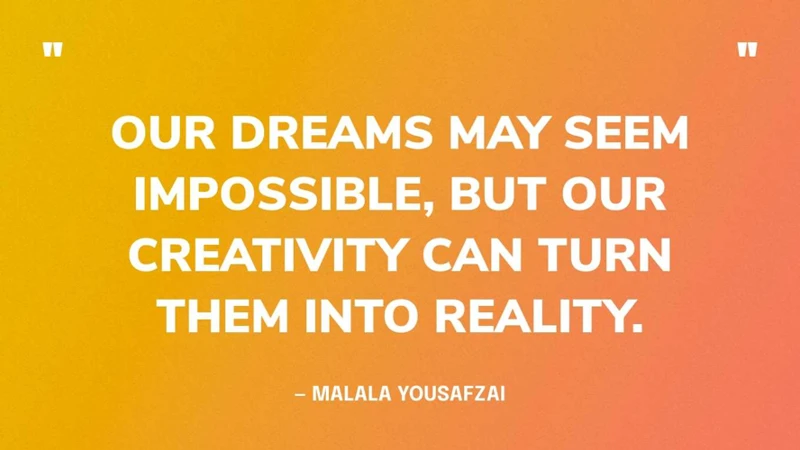
The link between dreams and inspiration has long captivated the minds of artists throughout history. Dreams have been recognized as a powerful catalyst for creativity, providing a wealth of symbolism, imagery, and ideas for artistic expression. When we dream, our subconscious mind takes center stage, free from the constraints of logic and rationality. This creates a space where imagination runs wild, allowing artists to tap into a wellspring of unconventional and thought-provoking concepts. Dreams serve as a gateway to the unconscious mind, revealing hidden desires, fears, and profound insights. Artists are able to draw upon these rich and often surreal experiences to fuel their creativity and bring forth unique and captivating works of art. From Salvador Dalí’s melting clocks to William Blake’s symbolic dreamscapes, dreams have been an enduring source of inspiration for artists seeking to explore the depths of the human psyche. Understanding the role of dreams in inspiring artists is crucial in appreciating the layers of meaning embedded in their creations. By delving into the intriguing intersections between dreams and creativity, we can gain a deeper insight into the diverse and complex world of artistic expression. To further explore the symbolic interpretation of dream imagery in visual art, click here.
The Link Between Dreams and Inspiration
The link between dreams and inspiration is a fascinating phenomenon that has intrigued artists and thinkers for centuries. Dreams have the power to transport us to ethereal landscapes and present us with surreal imagery that often defies logic and rationality. This unique realm of the subconscious provides a limitless pool of inspiration for artists seeking to tap into their creative potential. When we dream, our minds are free from the constraints of the waking world. We are able to explore unconventional ideas and connect seemingly disparate concepts. Dreams can serve as a wellspring of originality, offering artists a rich tapestry of symbols, emotions, and narratives to draw upon in their creations. Many artists have attributed their most groundbreaking works to inspiration derived from dreams. The enigmatic paintings of Salvador Dalí and the symbolic dreamscapes of William Blake are just a few examples of artists who have harnessed the extraordinary imaginative power of dreams. By delving into the link between dreams and inspiration, we gain a deeper understanding of how the inner workings of the mind can shape and influence artistic expression. To explore further the analyzing of dream-inspired art in the surrealist movement, click here.
Dreams as a Gateway to the Unconscious Mind
Dreams serve as a profound gateway to the unconscious mind, offering a glimpse into the hidden depths of our thoughts, emotions, and desires. As we sleep, our conscious mind takes a backseat, allowing the unconscious to take over and weave intricate narratives through the language of dreams. This unseen realm is a fertile ground for artists seeking to explore the depths of human experience and tap into the wellspring of creativity. By accessing the unconscious mind through dreams, artists are able to uncover deeply buried memories, emotions, and symbols that may not be accessible during waking life.
The unconscious mind, as explored by the psychoanalytic theories of Sigmund Freud and Carl Jung, is a reservoir of unacknowledged thoughts, fears, and fantasies. Dreams act as a bridge, spanning the gap between the conscious and unconscious realms. They unveil a rich tapestry of symbolic imagery, archetypes, and metaphors that can be translated into artistic expression. When artists tap into this dream realm, they not only access a wellspring of inspiration but also gain a deeper understanding of their own psyche.
Dreams have the ability to transcend the limitations of conscious thought processes and societal constraints. In dreams, taboos can be broken, and the impossible becomes possible. This liberating quality allows artists to explore unconventional ideas, challenge societal norms, and push the boundaries of their craft. By harnessing the power of dreams, artists are able to delve into the realms of the surreal, the fantastical, and the abstract, resulting in unique and thought-provoking creations.
In addition to being a source of artistic inspiration, exploring the unconscious through dreams can have therapeutic benefits. Through the act of expressing dreams through art, individuals can gain insight into their unconscious desires, conflicts, and unresolved issues. This process of self-reflection and self-expression can be cathartic, providing a means of release and healing. To learn more about the therapeutic benefits of expressing dreams through art, click here.
Dreams act as a gateway to the unconscious mind, allowing artists to access a wealth of deeply buried thoughts, emotions, and symbols. By tapping into this rich and fertile realm, artists gain inspiration, insight, and a unique perspective that can be translated into their artistic creations. The exploration of dreams as a gateway to the unconscious is not only a source of artistic inspiration but also a tool for self-reflection, healing, and personal growth.
Dreams in Ancient Art
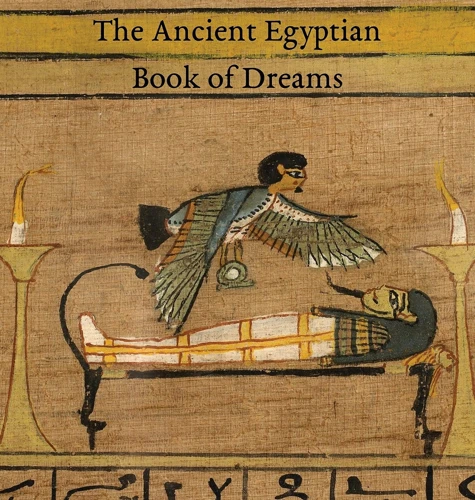
Surrealism in ancient Egyptian art provides a fascinating glimpse into the influence of dreams on artistic expression. The ancient Egyptians believed that dreams were a powerful means of communication with the divine realm, and thus, they held great significance in both spiritual and artistic contexts. Dream-like motifs such as floating figures, fantastical creatures, and surreal landscapes were prominently featured in Egyptian art, reflecting the imagery and symbolism found in their dreams. Similarly, in ancient Greece, dreams played a vital role in artistic inspiration and interpretation. The Greeks believed that dreams were sent by the gods and used them to gain insight into the future or to receive divine guidance. Dreaming gods, such as Morpheus, the god of dreams, were often depicted in Greek art, showcasing the connection between the dream world and artistic creation. These ancient civilizations recognized the profound influence of dreams on artistic expression, utilizing their symbolic and imaginative qualities to convey deeper meanings in their art. Explore more about the dream-inspired art of ancient civilizations here.
Surrealism in Ancient Egyptian Art
Surrealism in Ancient Egyptian Art:
– Hieroglyphic Symbolism: Ancient Egyptian art is known for its deep symbolism and the use of hieroglyphs, which often depicted dream-like and fantastical creatures. These enigmatic symbols and creatures, such as the sphinx and the winged scarab, can be seen as early expressions of surrealism in art. They were believed to hold hidden meanings and spiritual significance, blurring the lines between reality and imagination.
– Dreamlike Landscapes: Another aspect of surrealism in Ancient Egyptian art can be seen in the depiction of dreamlike landscapes. The Egyptians often portrayed their gods, pharaohs, and deceased individuals in idyllic settings with elements that defied the laws of nature. These dreamscapes, with their floating palaces, mythical animals, and celestial bodies, contributed to the mystical and surreal ambiance of their art.
– Symbolic Interpretations: Ancient Egyptian art also incorporated symbolism related to dreams and the afterlife. The depiction of the soul leaving the body during sleep or death was a common theme in funerary art, emphasizing the idea of an alternate reality beyond the physical realm. These symbols provided a glimpse into the spiritual beliefs and aspirations of the ancient Egyptians, conveying the mysterious and surreal nature of their artistic expression.
The surrealism found in Ancient Egyptian art showcases the enduring fascination with dreams and the subconscious mind. By embracing the fantastical and exploring the liminal spaces between reality and imagination, the ancient Egyptians foreshadowed the surrealistic tendencies that would later emerge in art movements centuries later. The symbolism and dreamlike qualities of their art continue to intrigue and captivate art enthusiasts and historians, offering a glimpse into the rich tapestry of their artistic and cultural legacy.
The Dreaming Gods of Ancient Greece
In Ancient Greece, dreams were believed to be messages from the gods, offering insight, guidance, and even prophecies. The Greeks attributed these divine dreams to a specific group of deities known as the “Oneiroi” or the Dreaming Gods. The most prominent among them were Morpheus, the god of dreams and transformation, and his brothers Phobetor, the god of nightmares, and Phantasos, the god of surreal and abstract dreams. These deities were said to reside in the dream realm, where they created and shaped the dreams that visited mortals during their slumber. The Dreaming Gods played a significant role in Greek mythology and literature, inspiring poets, playwrights, and artists alike. Their influence can be seen in the works of Homer, where dreams often serve as powerful omens and conduits for communication between the gods and mortals. The Dreaming Gods were also called upon for guidance and interpretation of dreams through rituals and divination practices. Understanding the importance of dreams in ancient Greek culture provides a profound insight into the significant role they played in shaping art, literature, and the beliefs of this ancient civilization.
Dreams in Renaissance Art
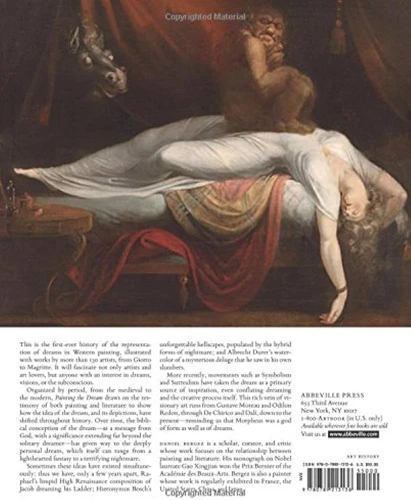
During the Renaissance period, dreams held a significant influence on the art world, as artists began to explore the depths of the human psyche and the ethereal realm of dreams. One notable example is Michelangelo’s renowned Sistine Chapel ceiling, where dream-like visions are intertwined with biblical scenes. It is believed that Michelangelo drew inspiration from his dreams to create the breathtaking imagery that adorns the chapel’s ceiling. Another prominent artist of the Renaissance, Albrecht Dürer, utilized dreams as a subject matter for his enigmatic painting, “Melencolia I.” This work captures the melancholic state of the artist’s mind, with the inclusion of mysterious symbols and a brooding atmosphere. Dreams were seen as a conduit to deeper truths and hidden meanings during this period, allowing artists to tap into their subconscious and explore concepts beyond the boundaries of the waking world. The influence of dreams in Renaissance art showcases the artists’ fascination with the mystical and their desire to convey profound insights through their work.
The Influence of Dreams on Michelangelo’s Sistine Chapel
Michelangelo’s iconic frescoes in the Sistine Chapel stand as a testament to the profound influence that dreams had on his artistic vision. As a devoutly religious artist, Michelangelo sought divine inspiration for his works, and his dreams played a significant role in shaping the imagery and composition of the Sistine Chapel ceiling. One of the most famous and widely studied sections of the frescoes is the Creation of Adam, in which God reaches out to touch Adam’s finger, imparting the spark of life. It is believed that this powerful image of divine connection was inspired by a dream Michelangelo had, where he saw the extraordinary potential of mankind and the importance of human connection with the divine. Another notable example is The Last Judgment, located on the altar wall of the chapel. Michelangelo’s intense and emotive portrayal of the climax of human history was heavily influenced by his dreams of apocalyptic visions and biblical themes. The vivid and dynamic compositions throughout the chapel were born from the depths of his unconscious mind, translating his dreams into breathtakingly expressive art. The intertwining of dreams and faith is evident in Michelangelo’s work, as he believed that his dream-inspired creations were messages from God, delivered to him through the ethereal realm of dreams. The impact of dreams on Michelangelo’s Sistine Chapel not only showcases his immense artistic talent but also highlights the powerful role that dreams can play in shaping and inspiring artistic masterpieces.
Dürer’s Enigmatic Dream Vision: Melencolia I
In the realm of Renaissance art, Albrecht Dürer’s masterpiece, “Melencolia I,” stands as a testament to the profound influence of dreams on artistic creation. This captivating engraving is shrouded in mystery, complexity, and symbolism, leaving viewers captivated and perplexed. “Melencolia I” portrays a melancholic angel surrounded by an array of enigmatic objects, including a magic square, a compass, and various geometric shapes. Many scholars believe that this artwork represents a dream vision, as indicated by the angel’s introspective and contemplative expression. The dream-like atmosphere and the intricate details in the engraving suggest the presence of hidden meanings and messages. Dürer’s use of light and shadow further enhances the ethereal quality of the artwork, adding to its elusive and enigmatic nature. The depth and complexity of “Melencolia I” highlight the intricate relationship between dreams and artistic inspiration during the Renaissance era, showcasing how dreams served as a wellspring of creativity and exploration for artists like Dürer. Through this artwork, Dürer invites viewers to enter a realm of introspection and contemplation, where the boundaries of the waking world blur with the enigmatic realm of dreams. By delving into the symbolism and imagery of “Melencolia I,” we gain a deeper understanding of the profound impact that dreams had on the imagination and creative process of Renaissance artists, allowing them to produce works that continue to captivate and perplex audiences to this day.
Dreams and Romanticism
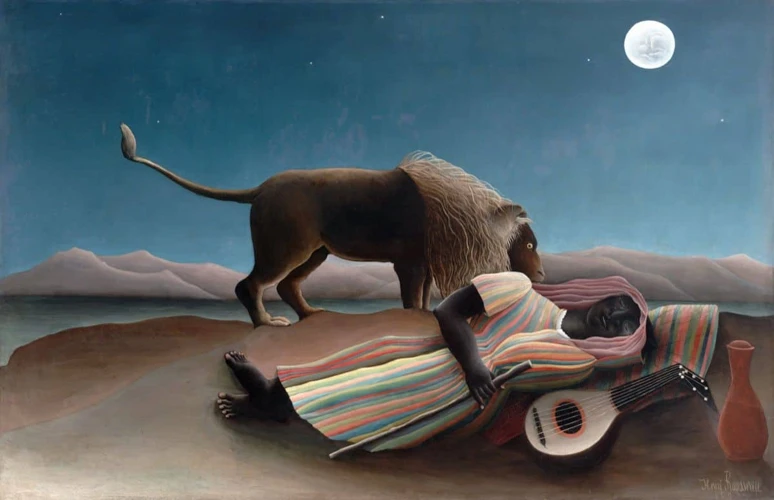
Romanticism, a movement characterized by its emphasis on emotion, imagination, and the power of nature, found a natural affinity with the ethereal world of dreams. The Romantic artists drew upon dreams as a wellspring of inspiration, infusing their works with a sense of mystery, wonder, and heightened emotion. William Blake, a prominent figure in Romanticism, explored the symbolic potential of dreams in his visionary artworks. His illuminated poems and illustrations, such as “The Ancient of Days,” are imbued with mystical and dreamlike imagery, reflecting his belief in the spiritual significance of dreams. Similarly, the French painter Eugène Delacroix incorporated dream motifs in his paintings, imbued with vibrant colors and dramatic scenes that evoke a sense of passion and tumultuous emotions. The influence of dreams on Romantic art can also be seen in the works of Caspar David Friedrich, whose landscapes often evoke a sense of awe and wonder, encapsulating the sublime beauty of the natural world. By indulging in dreams and embracing the fantastical, the Romantic artists sought to transcend the boundaries of reality and delve into the depths of the human imagination.
The Symbolic Dreamscapes of William Blake
William Blake, a visionary poet, and artist, is renowned for his ability to transport viewers into mesmerizing dreamscapes through his work. Blake delved deep into the realms of the imagination, exploring the spiritual and symbolic meanings hidden within his dreams. His art often depicted fantastical landscapes, populated with ethereal beings and intricate symbolism. In “The Ancient of Days,” for example, Blake portrays a divine figure measuring the heavens with a compass, symbolizing the act of creation and the power of the human imagination. This iconic image showcases Blake’s ability to infuse his dreams into his art, creating works that are both visually striking and laden with profound meaning. Another notable example of Blake’s symbolic dreamscapes is found in his collection of poems and illustrations, “Songs of Innocence and Experience.” Through vivid imagery and allegorical storytelling, Blake explores the complexities of the human condition, touching upon themes of innocence, corruption, and spiritual awakening. The dreamlike quality of his illustrations further enhances the surreal nature of his poems, allowing readers to delve into a realm where reality and fantasy intertwine. Blake’s exploration of dreams and symbolism serves as a testament to the profound impact that dreams can have on the creative process. The depth and complexity of his symbolic dreamscapes continue to captivate audiences, inspiring artists to this day.
Delacroix’s Striking Nightmares: The Influence of Dreams on Romantic Paintings
Delacroix’s Striking Nightmares: The Influence of Dreams on Romantic Paintings
– Delacroix, a prominent figure in the Romantic movement, was deeply influenced by his own dreams, which he infused into his striking and evocative paintings. His works often depicted intense emotions, turbulent scenes, and fantastical elements, mirroring the mysterious and surreal quality of dreams.
– One of Delacroix’s notable works influenced by dreams is “The Nightmare,” painted in 1827. This unsettling piece features a woman draped on a bed, tormented by a demonic creature and surrounded by eerie imagery. The composition and symbolism evoke a sense of fear and unease, reminiscent of the way nightmares can infiltrate our subconscious.
– In “The Death of Sardanapalus,” another masterpiece by Delacroix, dream-like elements are present in the chaotic and dramatic scene. The lavish banquet, the sense of impending doom, and the visceral emotions portrayed in the painting all contribute to the dream-like quality of the artwork.
– Delacroix believed that dreams held a power to tap into the depths of human emotion and capture profound truths that eluded rational thought. He saw dreams as a conduit to explore the complexities of the human psyche and translate them onto the canvas.
– By incorporating dream-inspired elements into his paintings, Delacroix aimed to ignite emotions and provoke contemplation in the viewer. He believed that dreams had the ability to awaken dormant passions and innermost desires, unlocking a realm of hidden truths and universal symbolism.
Delacroix’s fascination with dreams and their influence on his art is a testament to the profound impact of the dream realm on the Romantic movement as a whole. The incorporation of dream-inspired imagery allowed artists like Delacroix to tap into the depths of the human subconscious and create visually striking and emotionally charged masterpieces that continue to captivate audiences today.
Dreams in the Surrealist Movement
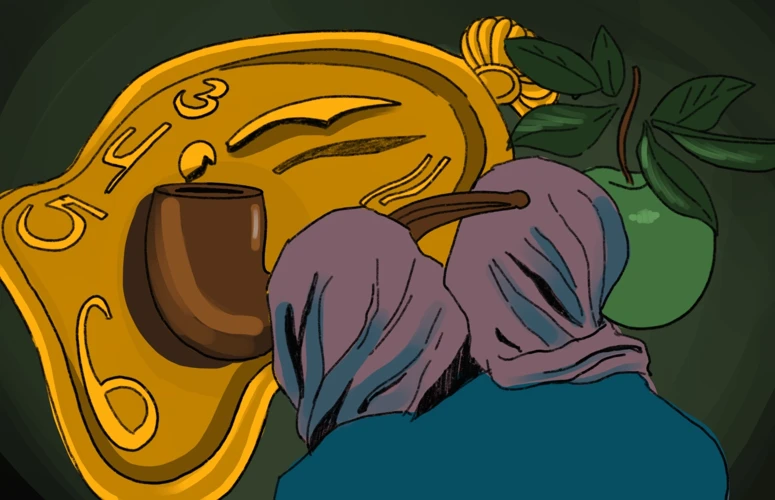
The Surrealist movement, known for its exploration of the subconscious and the dream world, was heavily influenced by the enigmatic nature of dreams. Surrealist artists sought to break free from the constraints of reality and tap into the depths of their unconscious minds. Salvador Dalí, one of the most prominent figures of this movement, created mesmerizing and surreal dreamworlds in his artwork. His iconic piece, “The Persistence of Memory,” with its melting clocks and dreamlike landscapes, invites viewers into a realm where time is distorted and the boundaries of reality are blurred. René Magritte, another influential Surrealist artist, used dreamlike imagery to challenge the viewer’s perception of reality. His mysterious and thought-provoking paintings, such as “The Son of Man” with its floating apple obscuring the face, leave a lasting impression and invite contemplation. The Surrealist movement embraced the power of dreams to unlock the subconscious, allowing artists to explore the realms of imagination and symbolism. To further delve into the analysis of dream-inspired art within the Surrealist movement, click here.
Salvador Dalí’s Surreal Dreamworlds
Salvador Dalí, the renowned surrealist artist, is often celebrated for his uncanny ability to bring his dreams to life on canvas. His artworks, such as “The Persistence of Memory,” are steeped in surrealism and filled with dream-like imagery that defies the boundaries of traditional representation. Dalí believed that dreams were a direct portal to the subconscious mind, where hidden desires, fears, and fantasies reside. In his pursuit of expressing the unfiltered contents of his psyche, he developed a technique called “paranoiac-critical method,” which allowed him to tap into the irrational and surreal aspects of his dreams.
Dalí’s dream-inspired paintings often featured bizarre and fantastical landscapes, distorted figures, and unexpected juxtapositions. One of his most famous works, “Dream Caused by the Flight of a Bee Around a Pomegranate a Second Before Awakening,” exemplifies his ability to seamlessly blend the dream world with reality. In this painting, Dalí creates a visual narrative that captures the fleeting moments of a dream, where logic and coherence give way to the irrational and illogical.
By embracing the imagery and symbolism found within his dreams, Dalí created art that challenged conventional understanding and invited viewers to explore the depths of their own subconscious minds. His dreamworlds served as a reflection of his innermost thoughts and desires, allowing him to create visually stunning and thought-provoking compositions.
Dalí’s obsession with dreams extended beyond the canvas. He believed that dreams held immense power and could influence reality. He often incorporated dreamlike elements into his daily life, blurring the line between the imagined and the real.
Salvador Dalí’s surreal dreamworlds continue to captivate audiences to this day, inviting us to question the nature of reality and explore the depths of our own dreams and subconscious minds. His unmistakable style and unique interpretation of dreams have left an indelible mark on the art world, inspiring countless artists to embrace their own imagination and delve into the mysterious realm of dreams.
René Magritte’s Mysterious Surrealist Dreams
René Magritte, a prominent figure in the surrealist movement, was known for his mysterious and thought-provoking artworks inspired by his dreams. His paintings often featured juxtapositions of ordinary objects in unusual contexts, challenging the viewer’s perception of reality. One of his most famous works, “The Son of Man,” depicts a man in a business suit wearing a bowler hat, with an apple obstructing his face. This strange image is said to be inspired by Magritte’s dream in which he saw himself standing in front of a mirror, but his reflection was obscured by an apple. This dream became a recurring motif in his works, symbolizing the enigma of personal identity and the hidden truths that lie beneath the surface. Another notable painting, “The False Mirror,” shows a giant eye with a cloudy blue sky replacing the iris. This surreal image, influenced by Magritte’s dreams, challenges viewers to question the nature of perception and the limitations of the human eye. Magritte’s dream-inspired artworks invite viewers to delve into the realm of the subconscious, where reality becomes distorted and ordinary objects take on new meanings. By capturing the mysterious essence of dreams, Magritte pushes the boundaries of traditional art and challenges conventional ways of seeing and understanding the world.
Contemporary Artists and Dream Imagery
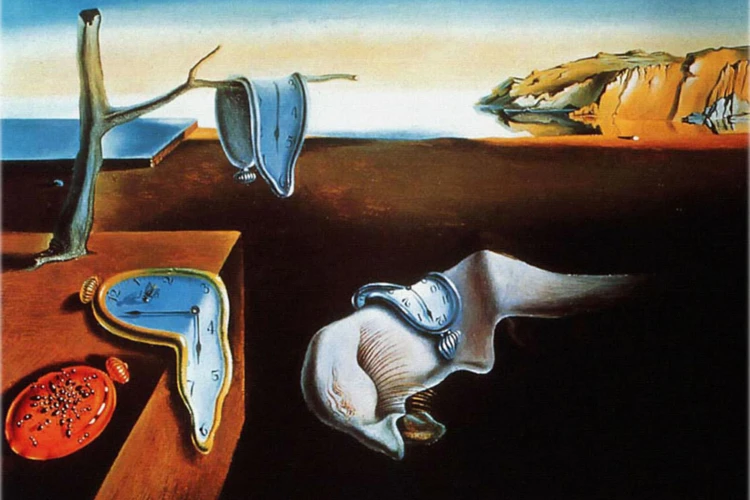
Contemporary artists continue to find inspiration in the world of dreams, using dream imagery to create captivating and thought-provoking works of art. One notable artist who embraced the surrealistic qualities of dreams is Frida Kahlo. Her surreal self-portraits often incorporated dreamlike elements, blurring the line between reality and the unconscious realm. Through her art, Kahlo explored her innermost thoughts, emotions, and experiences, using dream symbolism to convey personal narratives and express her pain and resilience. Another artist known for her dream-inspired photography is Sarah Ann Loreth. Loreth’s ethereal and haunting images often feature surreal landscapes and fantastical elements, transporting viewers into a dreamlike world. Her photographs evoke a sense of mystery and introspection, inviting viewers to contemplate the deeper meaning behind the dreamscapes she creates. Contemporary artists like Kahlo and Loreth demonstrate the enduring power of dreams in fueling artistic imagination and pushing the boundaries of visual expression.
Frida Kahlo’s Surreal Self-Portraits
Frida Kahlo, one of the most influential artists of the 20th century, is known for her deeply introspective and visually arresting self-portraits. Within these self-portraits, Kahlo skillfully merged elements of reality and dreamlike symbolism, creating a surreal and emotionally charged atmosphere. Through her art, Kahlo delves into her own inner world, exploring themes of pain, identity, and female empowerment. One of her most well-known works, “The Two Fridas,” showcases the artist’s recurring depiction of herself in a fragmented and dualistic manner. With one Frida dressed in traditional Tehuana attire and the other in a Victorian-style dress, this self-portrait encapsulates Kahlo’s exploration of her Mexican heritage and European influences. Her subjects often feature symbolic elements such as the huma bird, thorny vines, and vibrant flowers, which represent both personal and cultural significance. Kahlo’s self-portraits are a testament to her ability to channel her dreams and experiences into powerful visual narratives, inviting viewers to delve into the complexities of her emotions and personal history. Whether through the depiction of physical pain or the exploration of her innermost thoughts, Frida Kahlo’s surreal self-portraits continue to captivate and inspire audiences around the world.
Contemporary Dream Photography: The Ethereal Works of Sarah Ann Loreth
Sarah Ann Loreth is a contemporary photographer who explores the realm of dreams through her ethereal and haunting works. Her photography transports viewers into a world of mysterious beauty, blurring the line between reality and the subconscious. Loreth’s unique style combines elements of fantasy, surrealism, and storytelling, creating captivating narratives within her images. Her subjects often seem suspended in dreamlike landscapes, surrounded by delicate textures and soft lighting that enhance the dreamlike atmosphere. By employing a combination of digital manipulation and careful composition, Loreth creates ethereal scenes that evoke a sense of wonder and introspection. Through her work, she invites viewers to delve into the depths of their own dreams, awakening their imagination and stirring deep emotions. The evocative nature of Loreth’s photography has garnered widespread recognition, with her work being exhibited in galleries around the world and featured in numerous publications. Her ability to capture the essence of dreams and translate them into visually stunning images showcases the enduring power of dreams to inspire artists in the modern age. In exploring her photography, viewers are invited to contemplate the mysteries and symbolism of their own dreamscapes, deepening their understanding of the human experience.
The Science Behind Dreams and Creativity
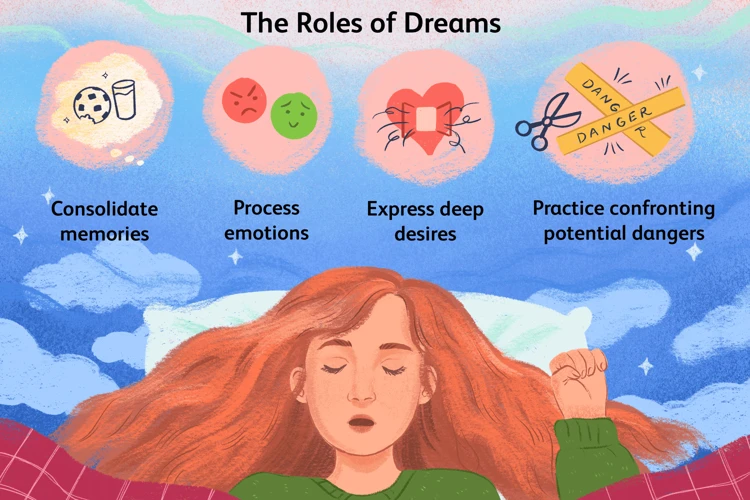
The science behind dreams and creativity is a fascinating field that explores the intricate workings of the brain and its impact on artistic inspiration. Research has shown that dreams play a vital role in problem-solving and idea generation. During the rapid eye movement (REM) sleep stage, the brain consolidates memories and experiences, facilitating the formation of new connections and associations. This process, known as memory consolidation, allows the brain to make creative connections between seemingly unrelated concepts and information. Dreams provide a platform for the brain to engage in unfiltered and uninhibited thinking, where ideas can flourish without the constraints of waking consciousness. Neuroscientists have also discovered that during sleep, the brain’s default mode network (DMN) becomes highly active. The DMN is responsible for internal thought processes and self-reflection, which are essential components of artistic creation. By understanding the neural mechanisms behind dreams and creativity, we can gain valuable insights into the potential of the sleeping mind to fuel artistic expression and innovation.
The Role of Dreams in Problem Solving and Idea Generation
The Role of Dreams in Problem Solving and Idea Generation can be profound, offering a unique perspective and innovative solutions to creative challenges. When we dream, our minds are freed from the constraints of everyday life, allowing our thoughts and ideas to flow freely. During REM (Rapid Eye Movement) sleep, which is the stage of sleep associated with vivid dreaming, our brains are highly active, making connections and processing information. This is especially true when it comes to problem-solving and idea generation. Dreams can provide us with unexpected insights, connecting seemingly unrelated concepts and sparking new and unconventional ideas. They have the ability to draw upon our personal experiences, memories, and knowledge, and weave them together in ways that can lead to breakthroughs in creative thinking. Many renowned artists and inventors throughout history have credited their dreams with providing them with valuable solutions and inspirations. For example, the famous chemist August Kekulé discovered the structure of the benzene molecule after dreaming of a snake biting its own tail, which led him to conceive of the idea of a ring structure for the molecule. Similarly, the physicist Niels Bohr arrived at his groundbreaking theory of the atom through a dream where he saw electrons spinning in orbits around a nucleus. These examples highlight the power of dreams in problem-solving by accessing our subconscious knowledge and providing fresh perspectives. By harnessing the insights gained from our dreams, artists, inventors, and creatives of all kinds can unlock new pathways for innovation and find innovative solutions to challenges they face.
Neuroscience and the Creative Potential of Dreams
Neuroscience offers valuable insights into the creative potential of dreams, revealing the fascinating ways in which our brain processes and synthesizes information during sleep. When we dream, various regions of the brain become activated, including the hippocampus involved in memory consolidation, the amygdala associated with emotions, and the visual cortex responsible for visual imagery. This multi-faceted neural activity provides a unique opportunity for the brain to make novel connections and associations, often leading to innovative and creative thinking. Research has shown that during the dream state, the brain undergoes a process of pattern recognition and synthesis, where disparate elements are combined and reconfigured to form new ideas and concepts. This cognitive process, known as “cognitive blending,” allows the brain to make unexpected connections between seemingly unrelated thoughts, leading to the generation of innovative and original ideas. Additionally, dreams have been found to enhance problem-solving abilities by facilitating flexible thinking and encouraging the exploration of unconventional solutions. The surreal and illogical nature of dreams often breaks free from the constraints of reality, enabling the brain to explore alternative perspectives and challenge traditional notions. This can greatly fuel the creative process, as artists and creatives leverage the imaginative and boundary-pushing nature of dreams to explore new artistic techniques, artistic styles, and narratives. The intersection between neuroscience and dreams provides valuable insights into the immense creative potential that lies within our sleeping minds. By understanding the neural mechanisms at play during dream states, artists can harness this creative wellspring to unlock new realms of imagination and innovation in their artwork.
The Influence of Dreams on Songwriters and Poets
The influence of dreams extends beyond the realm of visual art and manifests in the poetic and lyrical creations of songwriters and poets. Dreams have long served as a wellspring of inspiration for these wordsmiths, offering glimpses into a world where reality intertwines with the ethereal and the subconscious takes center stage. Bob Dylan, one of the most influential singer-songwriters of our time, often weaves enigmatic dream narratives into his lyrics, infusing his songs with a sense of mystery and ambiguity. From Samuel Taylor Coleridge’s visionary poem “Kubla Khan,” inspired by a dream, to the haunting and surreal imagery found in the works of poets like Edgar Allan Poe and Sylvia Plath, dreams have provided a fertile ground for poets to explore the depths of human emotions and the intricacies of the human psyche. These dream-inspired works evoke a sense of wonder and evoke profound emotions within readers and listeners alike. The influence of dreams on songwriters and poets speaks to the profound connection between the subconscious and the creative process, highlighting the universal nature of dreams as a source of inspiration and artistic expression.
Bob Dylan’s Enigmatic Dream Lyrics
Bob Dylan, the iconic singer-songwriter, is renowned for his poetic and enigmatic lyrics that often draw inspiration from dreams. His ability to weave vivid and thought-provoking narratives has captivated audiences for decades. Dylan’s songs, such as “Mr. Tambourine Man” and “A Hard Rain’s a-Gonna Fall,” showcase his profound storytelling abilities rooted in the dream realm. In “Mr. Tambourine Man,” Dylan paints a surreal and mesmerizing landscape, inviting the listener to escape into the magic of the unknown. The lyrics, “Hey, Mr. Tambourine Man, play a song for me, / I’m not sleepy, and there is no place I’m going to,” evoke a sense of wanderlust and a yearning for exploration, reminiscent of a dream-like state. Similarly, “A Hard Rain’s a-Gonna Fall” presents a series of apocalyptic and symbolic images that can be interpreted as visions from a dream. The lyrics, “I saw ten thousand talkers whose tongues were all broken, / I saw guns and sharp swords in the hands of young children,” create a sense of urgency and turmoil, characteristic of the surreal and fragmentary nature of dreams. Dylan’s knack for using cryptic and evocative language in his songs contributes to their enduring appeal, allowing listeners to interpret and interpret his lyrics in their own way. The enigmatic dream-inspired lyrics of Bob Dylan remain a testament to the profound artistic impact that dreams can have on the creative process, evoking emotions, introducing symbolism, and inviting listeners to embark on a journey through the depths of the subconscious mind.
Samuel Taylor Coleridge’s Visionary Poem: Kubla Khan
Samuel Taylor Coleridge’s visionary poem, “Kubla Khan,” is a mesmerizing work that showcases the profound influence of dreams on poetry. Written in 1797, Coleridge claims that the poem was inspired by a vivid dream he had while under the influence of opium. The poem transports readers to a mystical, otherworldly realm where the grandeur and beauty of Kubla Khan’s palace and surrounding landscape are vividly described. Coleridge’s dream-like state is palpable throughout the poem, as he weaves together rich imagery and mesmerizing language to create a truly atmospheric piece of poetry. The rhythmic flow of the poem, combined with Coleridge’s use of vivid sensory details, evokes a sense of wonder and enchantment. The dream-like quality of “Kubla Khan” is further accentuated by Coleridge’s fragmented composition. He famously claimed that he was interrupted while writing the poem, causing him to lose the remaining lines that he had envisioned. Despite its incomplete state, “Kubla Khan” stands as a testament to the power of dreams in fueling the imagination of poets. Coleridge’s visionary experience serves as a reminder of the boundless and ethereal nature of dreams, where ideas can be unearthed from the depths of the subconscious mind. This poem remains a timeless example of how dreams can inspire and shape the creative process in the realm of poetry.
| Key Points: |
| – “Kubla Khan” is a visionary poem by Samuel Taylor Coleridge, influenced by a dream he had while under the influence of opium. |
| – The poem immerses readers in a mystical realm, describing the grandeur and beauty of Kubla Khan’s palace and landscape. |
| – Coleridge’s use of vivid imagery and fragmented composition creates a dream-like quality in the poem. |
| – “Kubla Khan” captures the power of dreams in stimulating the imagination of poets and uncovering hidden ideas from the subconscious mind. |
Conclusion
In conclusion, the role of dreams in inspiring artists throughout history cannot be overstated. From ancient civilizations to contemporary artists, dreams have served as a wellspring of creativity, unlocking the depths of the human imagination. Throughout the centuries, artists have utilized their dreams as a gateway to the subconscious mind, tapping into a realm rich with symbolism, emotions, and hidden truths.
The influence of dreams can be seen in various art movements, such as surrealism, where artists sought to depict the strange and irrational nature of dreams. Salvador Dalí, for instance, created surreal dreamscapes, blending reality with the fantastical, while René Magritte explored the enigmatic and symbolic elements found within dreams.
Dreams have also played a significant role in the Renaissance period, as evidenced by Michelangelo’s frescoes in the Sistine Chapel. The artist incorporated dream-like elements into his compositions, infusing them with religious symbolism and profound meaning.
In Romanticism, dreams became a source of inspiration for poets and artists alike. William Blake painted symbolic dreamscapes, reflecting the complexities of the human psyche, while Eugène Delacroix evoked the nightmare-like qualities of dreams in his powerful paintings.
The science behind dreams and creativity further supports the notion that dreams have a profound impact on artistic inspiration. Dreams have been found to aid problem-solving, idea generation, and the exploration of visual imagery. Neuroscience studies have revealed the creative potential of dreams, as the brain makes unique connections and associations during the dream state.
Even songwriters and poets have drawn inspiration from their dreams. Bob Dylan, known for his enigmatic lyrics, often incorporated dream-like imagery and surrealistic narratives into his songs. Samuel Taylor Coleridge’s famous poem “Kubla Khan” was born out of a dream, showcasing the vivid and otherworldly realms that dreams can inspire.
In a world where logic and rationality often reign, dreams provide a sanctuary for artists to explore the depths of their subconscious and unleash their creativity. Whether serving as a well of symbolism, a tool for problem-solving, or a source of inspiration, dreams continue to fuel the artistic endeavors of creators worldwide.
As we look to the future, it is clear that dreams will continue to shape and inspire artists for generations to come. The ever-evolving understanding of the scientific, psychological, and emotional aspects of dreams will only further enrich the artistic landscape.
Intrigued by the therapeutic benefits of expressing dreams through art? Learn more here.
Frequently Asked Questions
1. Can dreams really inspire artists?
Absolutely! Dreams have been a significant source of inspiration for artists throughout history. The surreal landscapes, vivid imagery, and symbolism found in dreams often ignite the imagination and fuel the creative process.
2. How do dreams influence artistic creation?
Dreams can influence artistic creation in various ways. They provide artists with unique and unconventional ideas, unlock the depths of the subconscious mind, and reveal hidden desires and fears. Artists use these dream-inspired elements to create profound and thought-provoking works of art.
3. Which ancient art forms were influenced by dreams?
Ancient Egyptian and Greek art were heavily influenced by dreams. Ancient Egyptian art often depicted surreal and symbolic dreamscapes, while Greek mythology featured numerous gods and goddesses who communicated through dreams, further shaping artistic representations.
4. How did dreams impact Renaissance art?
In the Renaissance period, dreams played a significant role in inspiring artists. Michelangelo’s Sistine Chapel and Dürer’s “Melencolia I” are prime examples of artworks heavily influenced by dream visions and symbolism.
5. Who were some notable artists in the surrealist movement?
Salvador Dalí and René Magritte are renowned artists associated with the surrealist movement. Their surreal dreamscapes and enigmatic paintings challenged traditional notions of reality and sparked the imagination of generations to come.
6. Are there contemporary artists who incorporate dream imagery in their work?
Yes, there are numerous contemporary artists who seek inspiration from dreams. Frida Kahlo’s surreal self-portraits and Sarah Ann Loreth’s dream photography are just two examples of artists who continue to explore the interplay between dreams and artistic expression.
7. Are dreams only influential in visual art?
No, dreams also influence other creative mediums, such as songwriting and poetry. For instance, Bob Dylan’s enigmatic dream lyrics and Samuel Taylor Coleridge’s visionary poem “Kubla Khan” were heavily influenced by their dream experiences.
8. Is there a scientific basis for the connection between dreams and creativity?
Absolutely! Multiple studies suggest that dreams enhance problem-solving abilities and idea generation. Neuroscientific research further explores the creative potential of dreams, shedding light on their role in stimulating the imagination.
9. Can expressing dreams through art be therapeutic?
Yes, expressing dreams through art can be therapeutic. It allows individuals to explore and process their subconscious thoughts and emotions, offering a form of self-expression and personal healing.
10. How can we interpret dream imagery in visual art?
The interpretation of dream imagery in visual art is subjective and open to individual perception. It involves looking for symbolism, exploring the emotions evoked by the image, and considering the artist’s intent and personal experiences.








